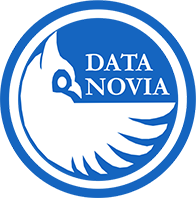Introduction
Understanding Python’s syntax and how to work with variables is essential for any aspiring programmer. This tutorial covers the basic rules of Python syntax, demonstrates how to declare and assign variables, and highlights best practices for writing clean, readable code. By the end of this guide, you’ll be comfortable with the building blocks that form the foundation of Python programming.
Python Syntax Overview
Python is known for its clean, readable syntax. Here are a few key points:
Indentation Matters:
Unlike many other languages, Python uses indentation (typically four spaces) to define code blocks. Proper indentation is crucial.Comments:
Use the#symbol to add comments that explain your code.Statements:
Each line of code is generally considered a statement. Statements can be grouped together using indentation.
Variables in Python
Variables are used to store data that can be used later in your program. Python is dynamically typed, which means you don’t have to declare a variable’s type explicitly.
Declaring and Assigning Variables
You can assign a value to a variable using the = operator. For example:
# Assigning a value to a variable
message = "Hello, World!"
number = 42
pi = 3.14159Best Practices for Naming Variables
Meaningful Names:
Choose variable names that describe the data they hold (e.g.,age,total_cost).Lowercase Letters and Underscores:
Use lowercase letters with underscores to separate words, such asfirst_nameortotal_sales.Avoid Reserved Keywords:
Do not use Python reserved keywords (likefor,if,while) as variable names.
Example: Putting It All Together
Below is a simple Python script that demonstrates variable assignment, printing output, and using comments to clarify code.
# Define variables with meaningful names
greeting = "Hello, World!"
name = "Alice"
age = 30
pi = 3.14159
# Print the variables to the console
print(greeting)
print("My name is", name)
print("I am", age, "years old.")
print("The value of pi is approximately", pi)Conclusion
Mastering Python’s syntax and understanding how to use variables is the first step toward becoming a proficient Python programmer. These fundamentals form the backbone of all Python code, allowing you to write clear, concise, and effective programs. Practice these concepts by experimenting with your own scripts, and you’ll quickly gain confidence in your coding skills.
Further Reading
- Python for Beginners: Your First Script
- Data Types and Structures in Python
- Control Flow and Loops in Python
Happy coding, and enjoy your journey into Python programming!
Explore More Articles
Here are more articles from the same category to help you dive deeper into the topic.
Reuse
Citation
@online{kassambara2024,
author = {Kassambara, Alboukadel},
title = {Syntax and {Variables} in {Python}},
date = {2024-02-01},
url = {https://www.datanovia.com/learn/programming/python/basics/syntax-and-variables.html},
langid = {en}
}
